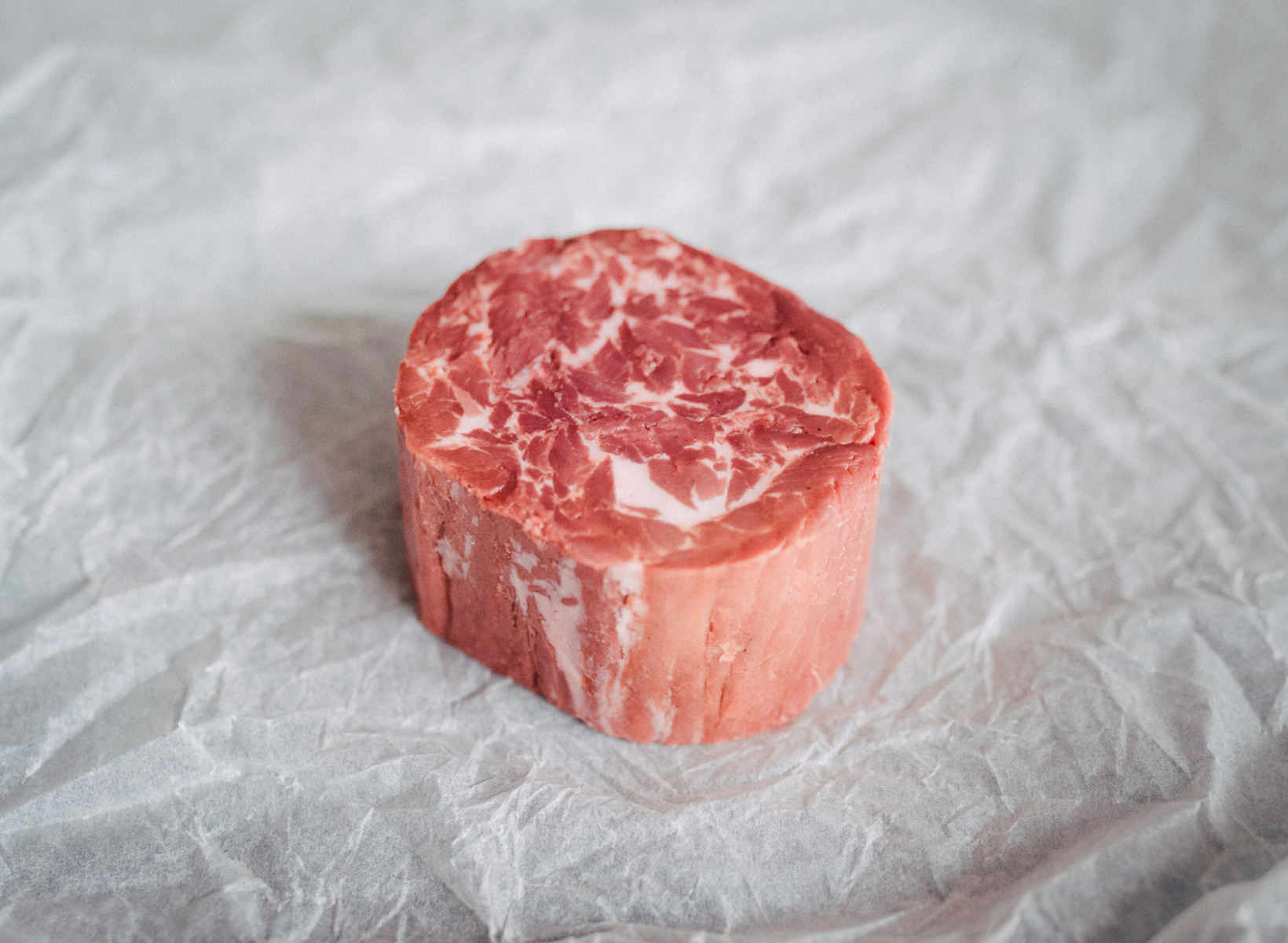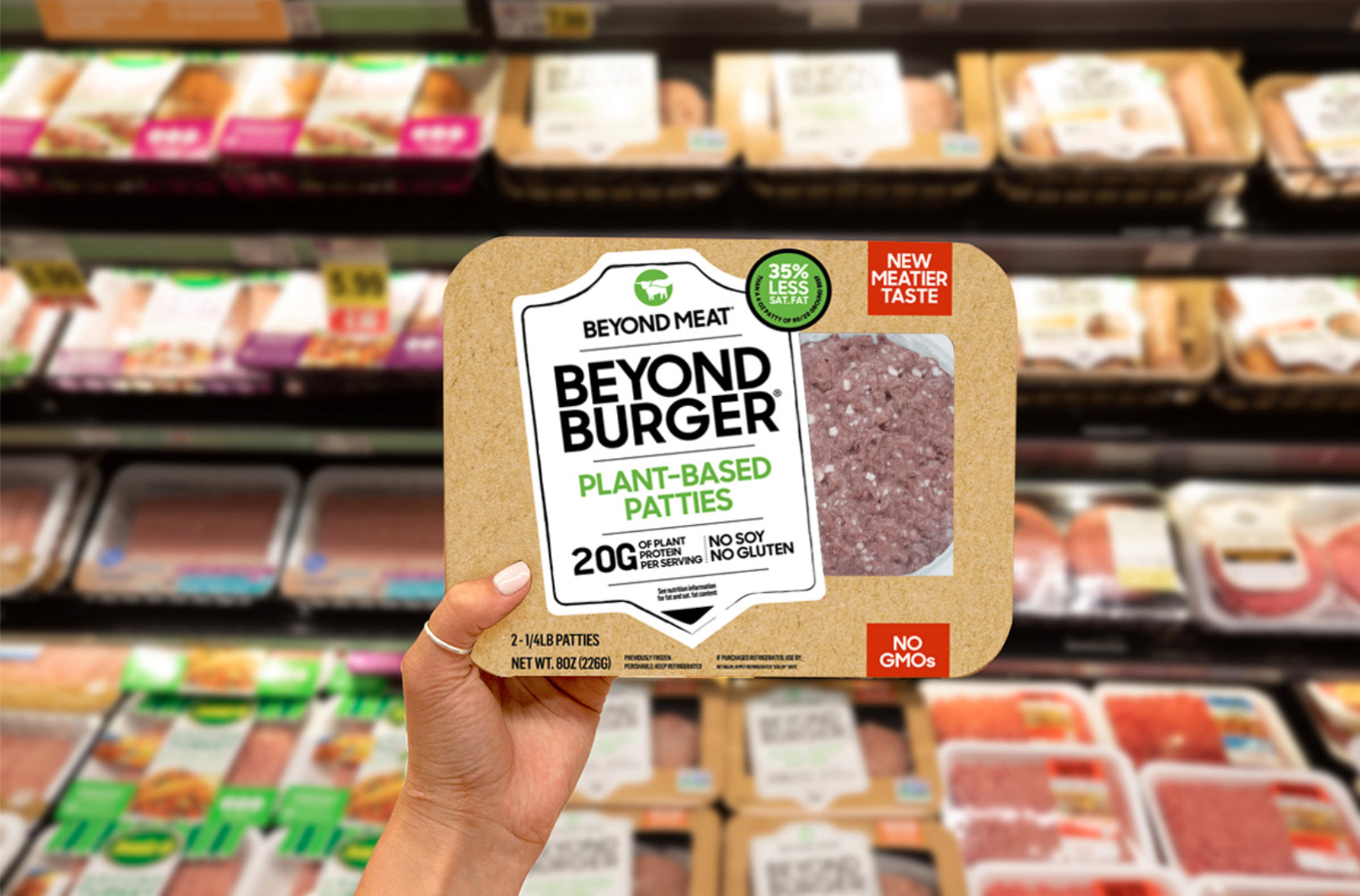Beef burgers. Not those pompous grass-fed patties on brioche buns. Those poseurs can remain on their (shudder) wooden chopping boards. What I truly yearned for was the most basic of burgers: the type of greasy garbage that makes you look like a bag of milk. The taste, the smell, the carpet bombing of my internal organs… those mouth-watering experiences had become mere memories. Until, that is, the arrival of the plant-based revolution. The uprising is now spreading across jolly old England. Both Burger King and McDonald’s recently launched sumptuous plant-based patties in my cursed homeland. Their burgers even impressed the savage carnivores whom I’m ashamed to call my friends. But the flavors merely whet my appetite for more. I soon craved a veggie revamp of my childhood favorite food: steak. My prayers were soon answered by a startup called Juicy Marbles. The company has created what it claims is the world’s first plant-based filet mignon. “What we wanted to achieve is a nutritious protein that has the experience of meat, and isn’t hard to include in a diverse diet.” Vladimir Mićković, one of the company’s co-founders, told TNW. My inner child demanded a taste test.
What’s beef?
Juicy Marbles shipped me a sample from the startup’s homeland of Slovenia. After sprinkling salt on the steaks, I fried them until the crust was golden brown. If you want to try my secret recipe, the magic is revealed in the video below: I sliced up the fake steak and shoved a forkful in my mouth. My tastebuds were impressed. The flavors were surprisingly rich and the texture certainly looked like beef to me. But would it convince the carnivores? I sought a review from a meat-eating restaurateur: Pete Kelly, the proprietor of London food spot Lucky & Joy. Kelly agreed that the patty had a strong resemblance to meat — although not necessarily a filet mignon. “It tastes like a really high-grade corned beef; a really classy version of it,” he said. You may be wondering why a tech site is behaving like a vegetarian propaganda operation. Don’t worry — I’ve done some cursory innovation research to conceal my agitprop.
All sizzle, no steak
Meat mimicry has come a long way since the days of dry bean burgers. While that generation of veggie patties was marketed at vegetarians, their plant-based descendants target meat-eaters. Two of the driving forces of the new school are Beyond Meat and Impossible Foods. Both companies were born around a decade ago, but each applies a different production technique. The Beyond Burger has roots in plant protein research at the University of Missouri, with beet extracts providing the patty’s fleshy color. The Impossible Burger, meanwhile, contains soy and potato protein, but the key ingredient is a molecule called heme. Heme occurs naturally in beef, but is genetically engineered by Impossible Foods. The company first inserts DNA from soy plants into modified yeast. The yeast is then fermented to produce the heme, which adds to the flavor and makes the patty artificially “bleed” like a beef burger. Another emerging meat alternative is lab-grown or cultured meat, which is cultivated from animal cells in a lab. These products are now slowly entering the market — although TNW readers still haven’t succumbed to their charms.
— TNW (@thenextweb) February 13, 2022 Juicy Marbles has devised a different approach. The company initially experimented with burgers, but soon decided the market was already saturated. The team turned its focus to a more novel product: whole cuts. These meats are largely absent from the plant-based market. They feature a complex consistency and intricate flecks of fat — known as marbling — that has proven difficult to replicate. “Marbling is like an ecosystem of its own within meat,” said Mićković. “It has its own flavor profile and its own solidity status. Once it’s at room temperature, it has to be solid. Then when you put it on fire, it has to partially melt and release flavors.” Juicy Marbles uses a patent-pending 3D assembly system to recreate the taste and texture. A machine called the Meat-o-Matic 9000 layers the proteins into linear fibers, which mimic the muscle structures of meat. Mićković is reluctant to provide further details on the technique. He says that plant-based rivals have already tried to steal their secrets — and they’ve only just entered the market.
A healthy business
The meat-free movement has had a rollercoaster few years. In 2019, Beyond Meat held the most successful IPO since the 2008 financial crisis. Barclays analysts soon predicted that the alternative meat market could reach $140 billion over the next decade — capturing about 10% of the global meat industry. Two years later, McDonald’s joined the party, with the launch of the McPlant. With the golden arches open for plant-based business, the meat-free future looked rosy — but the industry still faces major challenges. Beyond Meat’s market cap has plummeted from over $14 billion to under $4 billion, while sales in plant-based meat across the US fell by 0.5% in 2021. Analysts attributed the decline to restaurants reopening, supply chain problems, disappointing products, and overinflated expectations. Dieticians have also raised concerns about plant-based meats. “They seem to contain more salt, which can affect blood pressure and ultimately CVD risk,” said Gunter Kuhnle, Professor of Nutrition and Food Science at the University of Reading. Meat can also follow established processes to ensure food safety, but novel plant-based products could create more scope for risks — such as introducing allergens. Despite these issues, the plant-based food market could grow from $29.4 billion in 2020 to $162 billion in 2030, according to an August 2021 report by Bloomberg Intelligence. There could also be health benefits in plant-based alternatives. Juicy Marbles says its filet mignon is lower in fat and calories than like-for-like animal-derived products. The food is also fortified with iron and vitamin B12, which are often insufficient in vegetarian diets. Furthermore, it contains 7.2 grams of dietary fibers, which meat typically lacks.
Meat the future
Another potential advantage of plant-based foods is the positive impact they could have on the environment. Livestock takes up 83% of farmland and produces 60% of agriculture’s greenhouse gas emissions. Yet it provides only 18% of humanity’s food supply. Beef production alone uses nearly 60% of agricultural land, despite accounting for less than 2% of calories consumed worldwide. Advocates for plant-based meats say the products can cut our environmental footprints — and also help tackle food insecurity. But first, they need to attract more meat-eaters to their wares. Mićković believes the first step is replicating the familiar, but he expects to eventually transcend what meat can be: He mentions an example of what they could create: pumpkin-spiced meat. That sounds a bit too quirky for my unadventurous tastebuds. But if they can develop plant-based sashimi I will never again envy the flesh-eaters. The Juicy Marbles filet mignon is now available in the EU and coming soon to the US.



